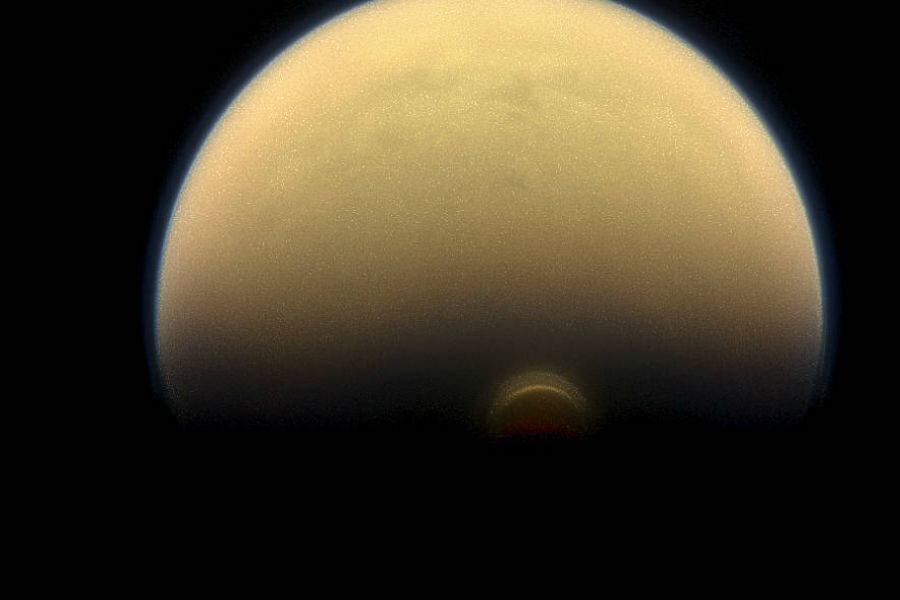Titan's massive ice cloud suggests five more years of winter, at least
Loading...
The current weather on Titan indicates how long its southern winter will be. Which, as it turns out, will be pretty long and really cold.
Last week, NASA's Cassini spacecraft discovered a “monstrous” new ice cloud above the stratosphere on Saturn’s moon, Titan. It’s expected to bring temperatures on Titan to as low as minus 238 degrees Fahrenheit. The data was collected by Cassini, which has instruments that can “see” in thermal wavelengths invisible to the human eye and “feel” its way through magnetic fields and tiny dust particles.
Titan’s winter season typically lasts about 7.5 Earth calendar years. But according to researchers, the new ice cloud will make the winter season even longer. The cloud, detected by Cassini’s infrared instrument, is estimated to be hovering nearly 60 miles lower than the last observed cloud found in 2012. According to NASA, Titan will still be enveloped in winter even after Cassini’s mission finishes in 2017.
“When we looked at the infrared data, this ice cloud stood out like nothing we’ve ever seen before,” said Carrie Anderson of NASA’s Goddard Space Flight Center in Maryland. “It practically smacked us in the face.”
Before the snow cloud was discovered, Titan's southern hemisphere was showing signs of transitioning from fall to winter.
Aside from Earth, Titan is the only known world in the solar system to have a stable liquid on its surface – its atmosphere consists of a thick, nitrogen base and its seas are made of ethane and methane.
Out of Saturn's 62 known moons, Titan is one of the planet's most fascinating. Many scientists have said that it is one of the solar system’s most likely bets to host alien life – though not very likely to produce organisms like those that have evolved on Earth.
The new discovery of the ice cloud revealed a smog-like formation of hydrogen, carbon, and nitrogen compounds. Its composition was not unlike the cloud found in 2012, but its characteristics were different enough to lead scientists to believe it was a brand-new cloud and not an evolved form of the last one.
“The opportunity to see the early stages of winter on Titan is very exciting,” said Robert Samuelson, a Goddard researcher working with Anderson. “Everything we are finding at the south pole tells us that the onset of southern winter is much more severe than the late stages of Titan’s northern winter.”






